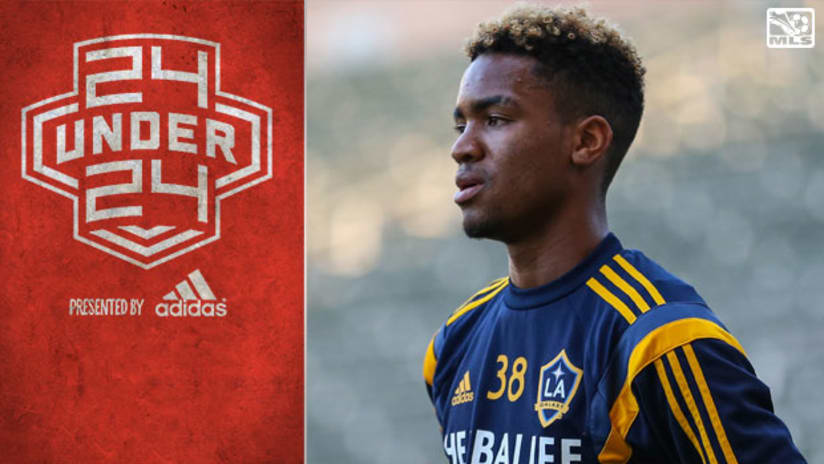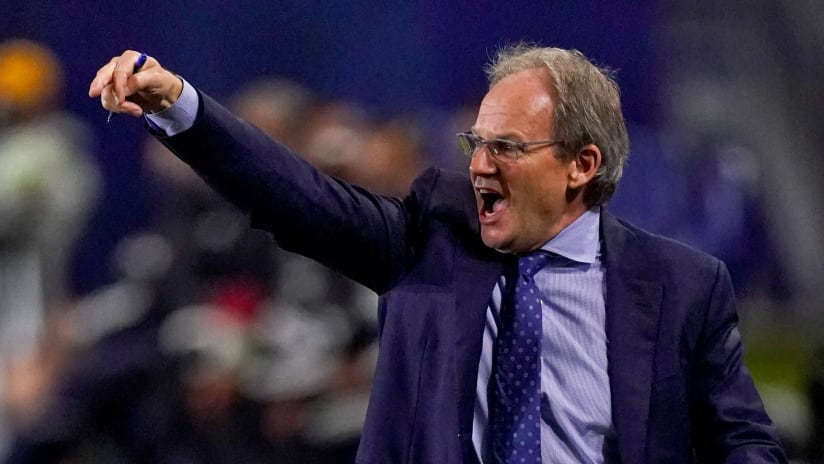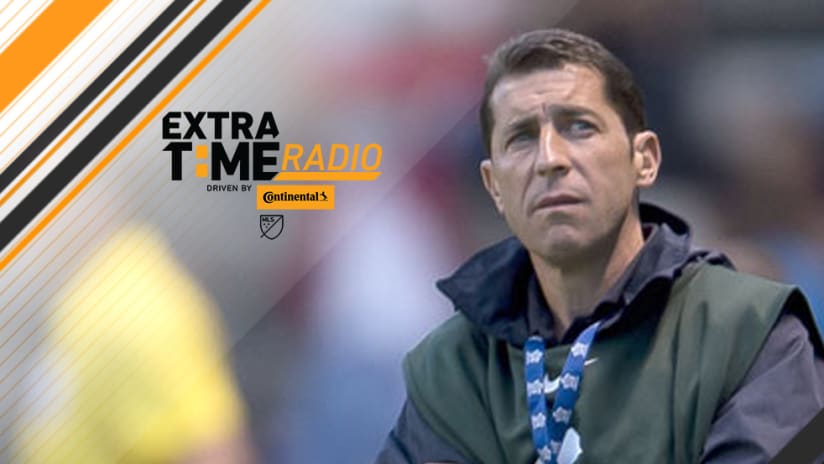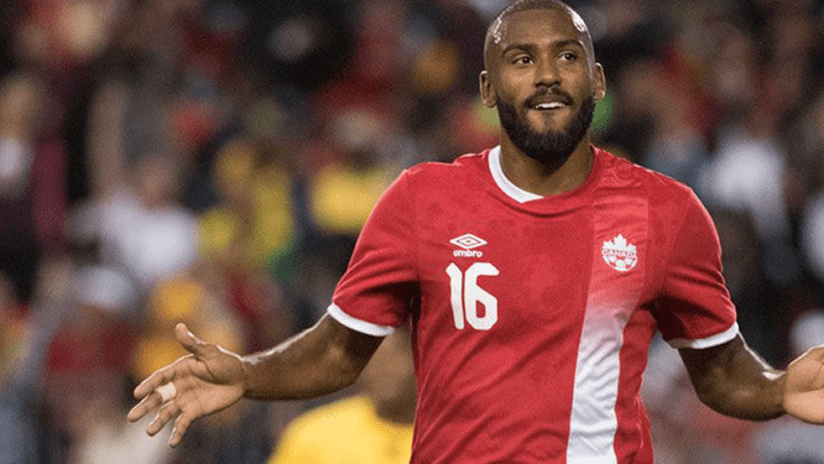The switch comes from right to left, a diagonal ball that drops just over the right back’s head. The first touch is soft, but positive, the left foot nudging the ball into position to cut inside with the right.
The defender drops off, backpedaling as the striker pushes confidently into the 18, three touches all that are needed to create the angle. The shot is sweet, a curler off the right post and in. The goalkeeper shakes his head, any save attempt an exercise in futility.
Bradford Jamieson IV wheels away to celebrate. The LA Galaxy U-18's 4-1 win against Chivas Guadalajara almost isn’t fair.
It’s April, almost exactly two months since Jamieson signed a Homegrown contract with the LA Galaxy and a month after he made his professional debut for LA Galaxy II in USL PRO. Jamieson scores against Anderlecht’s U-19s, as well. He’s terrorizing elite international youth talent in the Dallas Cup, early dividends on the Galaxy’s investment in filling the gap in their developmental ladder via the third division.
- 24 Under 24: The history of MLS players under 18 (INFOGRAPHIC)
“It was an eye opener for the coaches, the staff, but the players in particular, to see the progression in this kid’s game from just two months training at an elevated level,” Galaxy academy director Pete Vagenas says. “I know it’s corny, but he left the 18s a boy and seemed to come back a grown man in terms of his decisions on the field, the way he carried himself, the speed in which he played.”
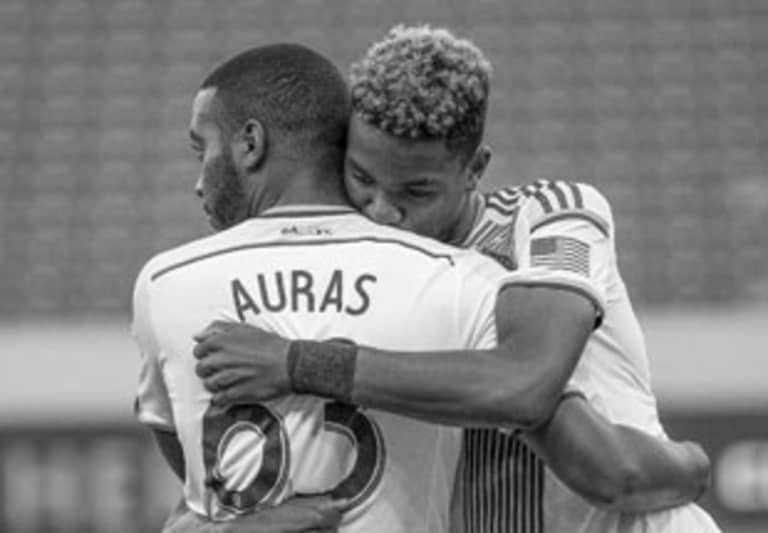
At 17 years old, Bradford Jamieson (right) knew consistent playing time was crucial for his development. He got that this year with LA Galaxy II in USL PRO. “When I looked at whether to go to Europe or stay, the fact that LA Galaxy II was created was a huge part in me staying here,” he says. (Hana Asano/LA Galaxy)
“It was an absolute shock to some of his teammates, some of whom he’d had for four or five years,” he adds. “He was arguably – and I say this with perspective – the best player in the tournament, without question head and shoulders above where he was two months prior.”
It didn’t necessarily surprise Jamieson, though, who will train with the Galaxy first team for the rest of the 2014 season after splitting time between Los Dos and Bruce Arena’s group during the USL PRO campaign.
The amped-up speed of play, the unrelenting physicality of men, the demands on both sides of the ball – “I hate defending,” Jamieson admits – forced him to adapt his game. Instead of oohs and aahs, LA Galaxy II head coach Curt Onalfo asks for the final product, challenging his young winger to take chances without the pressure that comes with first-team results.
- 24 Under 24: Looking back at previous editions of the rankings
“That’s what I’m here for,” Jamieson says. “If I was already perfect at defending and attacking at 17, I wouldn’t have to worry too much. That’s what development is for.”
And, as Onalfo can attest, that growth is surprising even to the people who see him every day.
“It’s unbelievable,” he says. “His growth as a player has been enormous.”
“He’s a perfect example of why USL PRO works,” USMNT assistant and U-20 head coach Tab Ramos says. “By jumping into USL PRO, by playing with professional players, in a short period of time he got it. All of a sudden the light went on.”
Talent was slipping through the cracks.
Despite sinking millions into their academy, signing the first-ever Homegrown player in MLS history, and presiding over one of the most talent-rich regions in a nation of nearly 320 million, the LA Galaxy had a youth development problem.
Their academy system was producing players with professional prospects – teenagers with the world at their feet – but the club’s developmental ladder was missing a crucial rung just as those players were poised to realize their potential.
“We had spent a ton of money, put a ton of resources into getting these kids where we wanted them,” Vagenas says. “We had fantastic players leaving our Galaxy U-18 team. It was just logistically impossible to sign every single one.”
A select few signed Homegrown contracts with the first team – Tristan Bowen in 2008, Jack McBean and Jose Villarreal in 2011, Oscar Sorto and Gyasi Zardes in 2012 – but first-team opportunities were sporadic. Ten scattered reserve games each season, an occasional place in Arena’s 18 here, a substitute appearance there, a rare start when injuries or outside competitions taxed the roster.
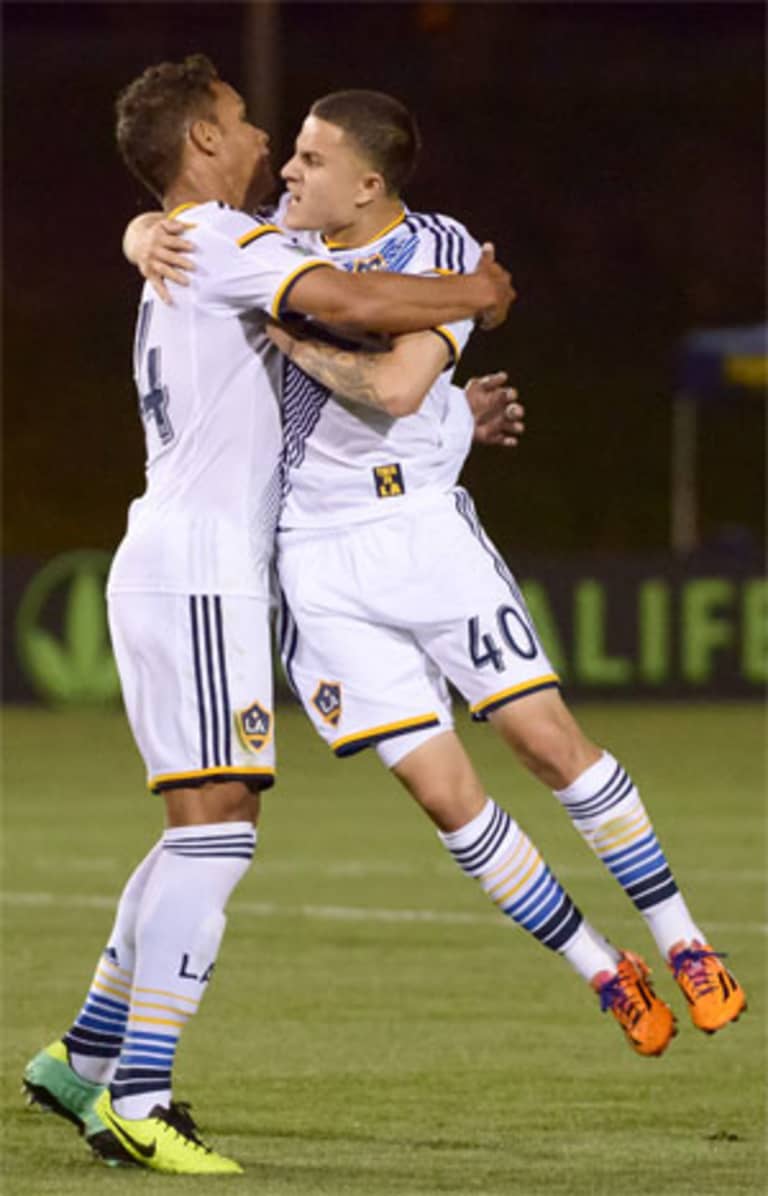
Raul Mendiola led MLS loanees in USL PRO with seven assists. Both he and Jamieson made their first-team debuts this year after seasoning with LA II. “It's just as hard as MLS," US U-20 boss Tab Ramos says. "Players play just as hard. It's as physical as MLS. It's not just fun and games anymore.” (Robert Mora/LA Galaxy)
What MLS realized and the Galaxy set about perfecting was that the next immediate leap in player development wouldn’t come at the grassroots level. It wouldn’t necessarily come in the academies either. It would come in the lower divisions, and it would require something completely unprecedented in North American soccer, transforming the pathway to the pros and USL PRO itself in the process.
Eschewing the affiliate model, the Galaxy would have a standalone USL PRO team, a developmental ladder from their U12s to the first team. Onalfo, a former MLS head coach and LA assistant, would head the project, paid to produce players instead of results.
“Once you lose contact on a daily basis with a player, the development can go left, right or sideways,” Vagenas says. “The biggest gap for us was between our Galaxy U-18s and the first team. How could we fix it? It was obviously to field our own USL PRO team. It’s truly allowed us for the first time to fully realize the pathway into our first team.”
That pathway didn’t exist before 2014, when the Galaxy became the first MLS club to bridge their academy and first team via USL PRO. But they certainly won't be the last, as other MLS teams ramp up their own efforts to create standalone teams lest they be left behind in the race to develop MLS-ready talent and, in the process, raise the level of both the league and the United States and Canadian national teams.
Of course, that doesn't necessarily help the Homegrown players who signed – more than 100 since LA inked Bowen to the deal that started it all – and failed to crack the first team before eventually finding themselves on the outside of MLS looking in. What would have become of those 26 players had they been afforded third-division opportunities to hone their skills while remaining under the first-team umbrella? And what of the other academy prospects who sought out professional opportunity elsewhere?
“We could make a list of players that slipped through the cracks in our organization because we didn’t have this in place,” Onalfo says. “Mario Rodriguez [at Borussia Mönchengladbach]. Paul Arriola, who signed with Tijuana. Those guys would be playing for us if LA Galaxy II was in existence two or three years ago.”
Jamieson and Raul Mendiola, who became the sixth and seventh Homegrown players in Galaxy history in February, won't slip through those cracks. Neither will the hopefuls who stock the Galaxy academy. If they leave after their academy education, it will be because they prefer an alternative route, not because opportunity – to improve, to mature, to play meaningful minutes – is lacking.
“[LA II] is a living, breathing entity that I see every single day,” Vagenas says. “It allows our academy kids to continue to keep their dream alive. It’s something I don’t think we’re going to see the great benefits for two or three years. But when they start happening, the results are going to be exponential.”
*

In their first season in USL PRO, LA II finished tied for third (15-7-6, 51 pts) despite head coach Curt Onalfo fielding lineups under constant turnover as players cycled up and down from the first team. They held a 2-0 lead against Sacramento Republic FC in the semifinals of the USL PRO playoffs, but fell 3-2 to end their hopes of a title in year one. (Aaron Jaffe/LA Galaxy)
*
From the first time he kicked a ball in AYSO, Bradford Jamieson IV wanted to be a pro.
More than a decade later – after two years at the IMG Academy in Bradenton, Fla., and 19 caps as a member of the United States U17 national team, after swapping the Chivas USA academy for the white and blue of the Galaxy – the 17-year-old had a choice.
He could try his hand in Europe, where many of his friends and former teammates were adapting to the lonely realities of professional life overseas – “They don’t have anyone, basically,” Jamieson says – or he could start his career at home, the middle of five boys still living in his parents house and hanging out with his girlfriend in his spare time.
- 24 Under 24: Seven players who just missed the cut
He might not impact the Galaxy’s MLS Cup hopes, but he would play.
“When I looked at whether to go to Europe or stay, the fact that LA Galaxy II was created was a huge part in me staying here,” says Jamieson. “There was no way that I would have been satisfied with being on the bench for basically the whole year.”
Combined, Jamieson and Mendiola, a 20-year-old forward born in Cuidad Juarez, appeared in 38 games for LA II in 2014, played 2,882 minutes, scored eight goals and assisted on eight more – Mendiola leading all MLS loanees with seven assists and Jamieson up for USL PRO Rookie of the Year honors after scoring six goals. They earned MLS cameos, too: 80 minutes combined in five appearances so far this season with Jamieson’s first MLS touch assisting on a Robbie Keane goal against Sporting KC on July 19.
In many ways, it was a moment made in USL PRO, months of preparation with LA II paying off for the first team. Jamieson also earned a U-20 call-up from Ramos, who doubles as an assistant under Jurgen Klinsmann with the senior team, and scored twice against the Defensa y Justicia reserves during a camp in Argentina earlier this month.
“It’s just as hard as MLS,” Ramos says. “Players play just as hard. It’s as physical as MLS. It’s not just fun and games anymore.”
It didn’t take Jamieson, a lithy 6-foot-2 attacker with a penchant for running at defenders, long to figure that out.
“Some guys have short tempers,” he says. “If you run at them a few times, you might have to switch sides for awhile. They’ll knock you. They don’t play games.”
“It’s a man’s game now,” he adds after reflecting on the 70 minutes he battled through a particularly jarring collision that left his thigh in knots. “You either become a man or you get eaten. You have to get used to it. That’s why getting games is so important.”
Joining Jamieson and Mendiola on the field with LA II were McBean (5 g, 6 a), Sorto (1,808 minutes played) and Villarreal (1 g, 2 a in 400 minutes), while Zardes made a lone start after stepping right into the Galaxy lineup following a four-year college career at Cal State Bakersfield. He is currently tied with Keane for the team lead with 15 goals, a new Homegrown record.
- 24 Under 24: Homegrown team that could challenge any in MLS
All told, the six Galaxy Homegrowns played 93 games in USL PRO this season, logged 6,568 minutes, scored 15 goals and added 17 assists – more than MLS’ entire Homegrown contribution in USL PRO in 2013. Between Homegrowns, draft picks and signings, LA Galaxy players racked up 11,328 minutes in the third division, 165 competitive games they wouldn’t have gotten elsewhere.
As individuals, they developed. As a team, they succeeded immediately, finishing tied for third (15-7-6, 51 pts) in USL PRO despite Onalfo fielding lineups under constant turnover as players cycled up and down from the first team.
LA II nearly conjured up a fairytale ending, too, crashing out of the playoffs against Sacramento Republic FC last Saturday after holding a 2-0 lead, just a break or two from playing for a title in their first season.
“We’re really proud of what we achieved in a short amount of time,” Onalfo says. “We came a game away from hosting the championship at our place with the youngest team in USL. It was a lot of fun.”
**
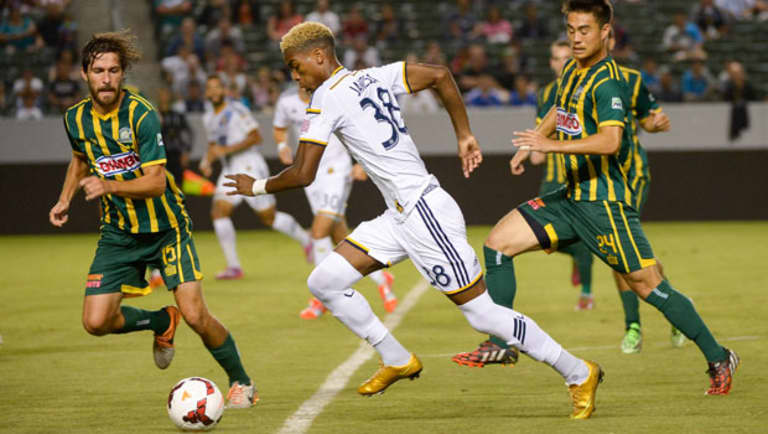
Bradford Jamieson IV's first season as a pro finished with a USL PRO Rookie of the Year nomination after the LA Galaxy II winger scored six goals and added one assist in 18 games. He also earned a call-up to Tab Ramos' United States U-20 national team. (Robert Mora/LA Galaxy)
*
As of 2015, MLS’ agreement with USL PRO will require, minimally, an affiliation agreement, but it seems the Galaxy’s standalone monopoly will last just a single season.
Six other MLS clubs have declared intent to operate franchises for the 2015 season – Real Salt Lake, Montreal, Vancouver, Seattle, Portland and Toronto – but none have signed franchise agreements with USL PRO. At this time, LA Galaxy II is the only confirmed MLS-operated franchise.
Though a Sept. 15 deadline that had been bandied about publicly has come and gone, USL PRO president Tim Holt told MLSsoccer.com that all six still have an opportunity to finalize deals this fall before the 2015 season. He says as many as four to six standalone MLS sides could be added this offseason.
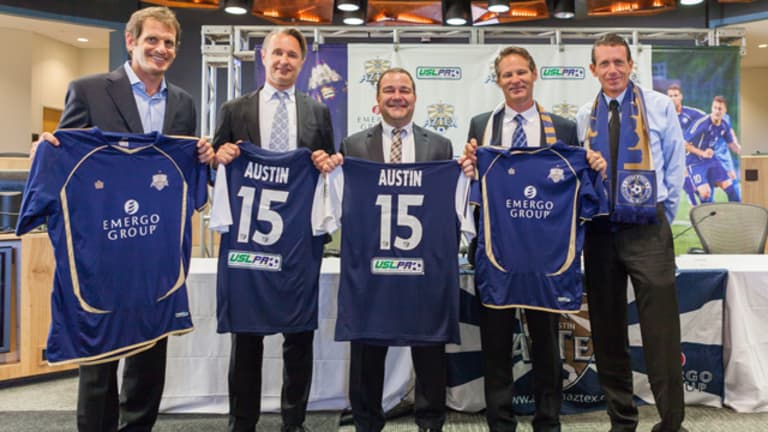
In addition to the up to six MLS standalone clubs poised to join the league, USL PRO has already locked in 2015 expansion franchises in Tulsa, Austin, Colorado Springs and St. Louis while Louisville will replace Orlando and Charlotte saw a new team formed to substitute for outgoing Charlotte Eagles. After fielding 14 teams in 2014, USL PRO could expand to as many as 24 teams in 2015, a substantial increase in the league’s footprint. (USA Today Sports)
“We’re well down the road with the organizations that are involved here,” says Holt, adding discussions have been ongoing for more than a year. “When announcements are made later this fall and specifics are unveiled, it will be incredibly exciting. Not just in those markets, but fans of the sport in this country.”
For the time being, RSL and Montreal’s franchises appear to be on the surest footing, with public monikers – FC Montreal and the Real Monarchs – and set venue plans.
Seattle, meanwhile, are also expected to field a USL PRO team at Starfire Sports Complex in the suburbs, Vancouver have engaged in a public search for a home base and Portland owner Merritt Paulson all but broke the news on Twitter, hinting that further details would be released in mid October.
Toronto also seem set to end their affiliation with the Wilmington Hammerheads to create a permanent solution in Ontario, with former LA Galaxy academy coach and TFC academy director turned MLS head coach Greg Vanney saying the club is moving forward with plans to field a USL PRO team in 2015.
“It’s a big jump to go from the academy straight to MLS,” he says. “I think this is a huge opportunity and huge step for the game in North America.”
Looking ahead to 2016, Dynamo president Chris Canetti recently met with officials in McAllen, Texas, about 350 miles south of Houston, to present a proposal that would see the club station a USL PRO team in the city. FC Dallas have said publicly that they’re targeting the same timeline.
The New York Red Bulls, meanwhile, recently scrapped plans for a standalone team in 2015, and are currently searching for a USL PRO affiliate.
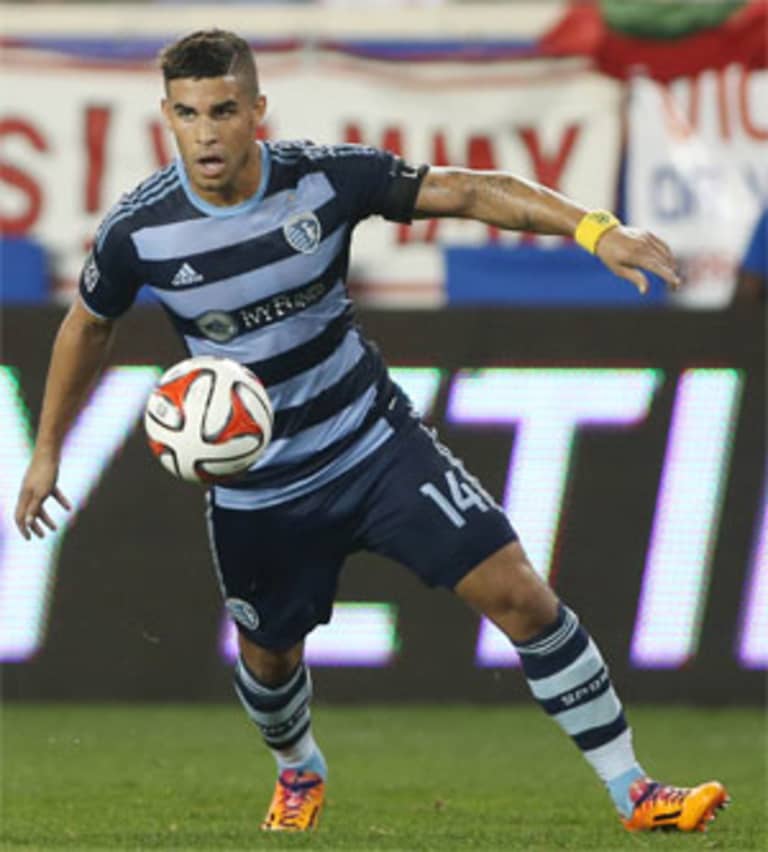
What was previously most notably a place for Sporting KC forward Dom Dwyer to gain much-needed confidence ahead of this year’s 20-plus goal campaign is now an obvious conduit to the first team. USL PRO is where Robbie Rogers experimented with left back. It’s where Joe Willis got 18 games in goal to stay sharp for D.C. United. It’s also where former Homegrown signings like Matt Kassel (NY), Alex Dixon (HOU) and London Woodberry (DAL) are resetting their careers. (USA Today Sports)
“People are starting to see that if you not only have a USL PRO team but have it right there, the advantages are just so much more than having an affiliate where there is some connection but not the same tie-in as a standalone,” MLS vice president of competition Jeff Agoos says. “I think over time you’ll eventually see most teams get there.”
That much is apparent when you consider minutes played by MLSers in the third division jumped 334 percent in just one year from 2013 (20,083) to 2014 (67,158), 100 players seeing time, 74 more than a year ago. With MLS requiring affiliations in 2015 and as many as six standalone sides in the works, that number figures to see even more explosive growth in 2015.
“People will follow suit,” Onalfo says. “It’s impacted our first team as well. Hopefully real soon you’ll start seeing some of these young guys contributing on a more consistent basis for the first team. Hopefully, that’s as soon as next year. If that’s the case, then we’ve really hit a home run with all this.”
It’s early yet, but it’s clear MLS clubs are quickly beginning to realize the opportunity cost that comes with delaying investment in, well, opportunity.
The quicker they come to that conclusion, the quicker the return on investment will begin trickling in via Homegrown starters and, as D.C. and Seattle saw with Andy Najar and DeAndre Yedlin, significant allocation gains following lucrative transfers. Ultimately, the United States and Canadian national teams stand to gain as well.
“Overnight, as soon as more teams are doing this, our U-20 program will be significantly better and so will our Olympic team,” Onalfo says. “In turn, so will our national team. As soon as this becomes commonplace with all the teams in MLS, we’re really going to see that progress and acceleration of player development that we’re striving for.”
And that’s the point. For all his promise, for all Jamieson’s production in USL PRO with LA Galaxy II and his growth with Ramos’ U-20s, the investment only truly pays off when players take the next step, an investment that hasn’t always been realized until now.
“He’s an example of someone that maybe we would have lost,” Ramos says. “If LA Galaxy doesn’t have LA II, Bradford Jamieson is not an option for the U-20 national team. And the goal is not the U-20 national team. The goal is a national team player down the road.”
Of course, it’ll likely be years before Jamieson has the opportunity to realize that potential. But what matters most is that the opportunity exists, just as it will for dozens more promising teenagers in the years to come. In LA, and soon elsewhere in MLS, the links on the chain – from U14 to USMNT – are finally connected.
It’s simply a matter of climbing them, one by one.
“This the best of both worlds,” Jamieson says. “Soccer is my everyday duty. It’s what I wake up to do.”
Translation?
“Everybody wins,” Ramos says.

